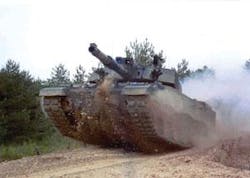By Courtney E. Howard
LONDON—European land-based intelligence, surveillance, target acquisition, and reconnaissance (ISTAR) vehicle electronics applications continue to grow as countries modernize defense forces.
Factors driving the applications include the increased focus on network-centric warfare, as well as the European Union battle group and response force concept of North Atlantic Treaty Organization (NATO), according to a new report from Frost & Sullivan in London.
In “European Land-based ISTAR—Vehicle Electronics applications,” Frost & Sullivan analysts predict applications revenues will exceed $5.4 billion in the period from 2008 to 2017.
“Electro-optic and infrared systems seem to have a major share within the ISTAR vehicle electronics applications, followed by navigation systems and vehicle intercom systems, which are a must for every other vehicle that is upgraded and manufactured,” notes Frost & Sullivan research analyst Harish Balasubramanian. “On the other hand, remote overhead weapon stations (ROWS) and surveillance, target acquisition, and reconnaissance (STAR) systems have the least share, as their usage is limited to particular vehicles.”
The United Kingdom is expected to be the highest spender in the European land-based ISTAR vehicle electronics applications, accounting for a major share of procurements between 2008 and 2017. Germany, France, Italy, and the Netherlands are also expected to have a major share in the European land-based ISTAR vehicle electronics applications over the same period.
“Keeping pace with the continuous advances in defense technology is a major challenge for participants in the European land-based ISTAR vehicle electronics applications,” Balasubramanian continues. “Restricted defense budget allocations and reductions in the total number of active troops in service can be seen as restraints for the applications, but are unlikely to have a major impact,” he says.
In fact, the development of unmanned vehicle systems, which keep soldiers out of harm’s way, will be a key factor in the European land-based vetronics applications in the years to come, reveals a representative.
“European Land-based ISTAR—Vehicle Electronics applications” is now available from Frost & Sullivan.
For more information, visit Frost & Sullivan online at www.frost.com.




